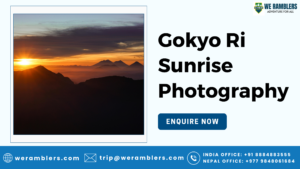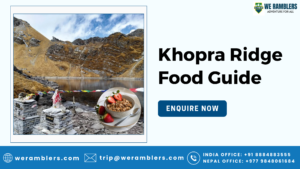Three Passes Trek Cost Saving Tips: Budget Hacks to Reduce Cost Without Compromising Safety
The Everest Three Passes Trek is one of the most thrilling and rewarding adventures in Nepal. Covering three high passes — Kongma La (5,535 m), Cho La (5,420 m), and Renjo La (5,360 m) — the trek offers breathtaking panoramas, diverse terrains, glacier journeys, and a complete Everest region experience.
But with increasing tourism costs, inflation, and rising flight prices, trekkers are actively searching for Three Passes Trek Cost Saving Tips that can reduce their budget without compromising safety or comfort on the trail.
This guide reveals strategic, practical, and locally recommended ways to save money while still ensuring a safe, well-managed, and enjoyable Three Passes journey. Whether you’re an experienced hiker or a budget-conscious backpacker, these cheap Three Passes Trek hacks can significantly lower your overall expenses.
Understanding the Cost of the Three Passes Trek
Before diving into the Three Passes Trek Cost Saving Tips, it’s important to understand where most of the budget goes. Typically, costs include:
- Lukla flights
- Accommodation & meals
- Guide & porter fees
- Permits (TIMS & Sagarmatha National Park)
- Gear & clothing
- Insurance
- Transportation within Kathmandu
These expenses can add up quickly, especially for international trekkers. The key is identifying areas where savings are possible without reducing safety, especially essential in the high-altitude, remote Everest region.
Three Passes Trek Cost Saving Tips (Smart Budget Hacks)
Below are the best, most effective, and responsible ways to save money on this high-altitude adventure.
1. Travel in a Small Group for Shared Costs
One of the easiest Three Passes Trek Cost Saving Tips is to join or form a small trekking group. Group trekking reduces:
- Guide fees
- Porter fees
- Lukla flight tickets (group discounts often apply)
- Room costs in tea houses
- Shared hot water / charging fees
Opting for a group discount on Lukla flights can save you anywhere from USD 15–30 per person, helping bring down your Everest trek cost significantly.
2. Rent Trekking Gear in Kathmandu Instead of Buying New
The cost of buying brand-new trekking equipment quickly adds up. Kathmandu offers high-quality gear rental Nepal options at reasonable prices.
You can rent:
- Down jackets
- Sleeping bags
- Trekking poles
- Crampons
- Microspikes
- Daypacks
- Gloves & mittens
Renting your equipment cuts your upfront cost drastically while ensuring you have safe, warm, and professional-standard gear — perfect for a cheap Three Passes Trek approach.
3. Choose Off-Season or Shoulder-Season Travel
Travelling during the shoulder seasons can save money on:
- Lukla flights
- Accommodation
- Food
- Gear rental
- Guide/porter availability
Best budget-friendly trekking seasons:
- Late February – Early March
- Mid-November – Early December
Not only are prices lower, but trails are quieter and more peaceful.
4. Fly Into Ramechhap Instead of Kathmandu-Lukla Direct Flights
Direct flights from Kathmandu to Lukla are more expensive and restricted. Flying from Ramechhap Airport (Manthali) to Lukla is cheaper and has more reliable weather windows.
This can save you:
- USD 20–50 per ticket
- Time waiting for flight delays
One of the smart save money Everest trek strategies includes choosing the right airport.
5. Bring Your Own Snacks & Purification Method
Food on the trail gets more expensive the higher you go. Bringing energy snacks from Kathmandu saves a lot of money.
Bring:
- Protein bars
- Trail mix
- Nuts & seeds
- Chocolate
- Electrolyte powders
Also, instead of buying bottled water (USD 1–4 per bottle), use:
- SteriPen
- Water purification tablets
- Filter bottles
This saves up to USD 80–100 during the entire trek and reduces plastic waste.
6. Negotiate Room Prices at Tea Houses
Most tea house owners will offer free or discounted rooms if:
- You eat dinner and breakfast at the same lodge
- You arrive early
- You’re trekking during non-peak season
This is one of the most flexible Three Passes Trek Cost Saving Tips, especially in places like:
- Namche Bazaar
- Dingboche
- Gokyo
- Thame
Be polite and respectful when negotiating — it goes a long way.
7. Choose a Local Trekking Agency Instead of International Companies
International trekking companies often charge 40–70% more for the same service. Opting for a trusted local operator in Nepal ensures you get:
- Local expertise
- Certified guides
- Fair prices
- Professional safety standards
This is one of the best ways to get a cheap Three Passes Trek while maintaining high safety and service quality.
8. Carry a Power Bank to Avoid Paying for Charging
Charging your phone or camera in tea houses can cost:
- USD 3–5 per charge at lower altitudes
- USD 5–10 at high-altitude villages
Bringing one or two power banks saves you money throughout the trek.
9. Avoid Unnecessary Items (Pack Light & Smart)
Overpacking leads to:
- Extra porter fees
- Difficulty on high passes
- Extra purchases in Lukla or Namche
Stick to essentials:
- Layering system
- Thermal wear
- Lightweight down jacket
- Microspikes for Cho La
- Proper gloves
- Good boots
Packing light reduces overall trek cost and keeps you safe on crossing days.
10. Bring Your Own Medical & First Aid Items
Buying medicines in Namche or Dingboche is extremely expensive.
Carry:
- Diamox (must consult doctor)
- Painkillers
- Blister pads
- Bandages
- Rehydration salts
- Antiseptic wipes
Good preparation = reduced expenses + enhanced safety.
Advanced Three Passes Trek Cost Saving Tips
Here are some lesser-known but highly effective ways to save money without increasing risk.
11. Book Lukla Flights Early
You can save USD 30–60 and secure better flight times.
12. Share Guide/Porter Services With Other Solo Trekkers
Great for solo travelers wanting to save money Everest trek costs.
13. Eat Vegetarian on the Trek
Meat is flown in or carried by porters — expensive and not always fresh.
14. Bring a Reusable Water Bottle
Stops you from buying multiple bottles daily.
15. Stay Longer in Kathmandu to Find Deals
Longer stays = more bargaining power in Thamel for gear rental Nepal or tour packages.
FAQs on Three Passes Trek Cost Saving Tips
1. What are the best Three Passes Trek Cost Saving Tips for beginners?
Rent gear in Kathmandu, join a small group, fly via Ramechhap, and use water purification instead of buying bottles.
2. Can I do the Three Passes Trek cheaply without compromising safety?
Yes. A cheap Three Passes Trek is possible if you rent gear, share guides/porters, avoid unnecessary purchases, and choose a reputable local operator.
3. How do I save money on Lukla flights?
Book early, fly from Ramechhap, or ask about group discounts on Lukla flights if you’re trekking with a team.
4. Is it cheaper to rent trekking gear in Nepal instead of buying?
Absolutely. Gear rental Nepal stores offer high-quality items at a fraction of purchase cost.
5. How much money can I save by carrying my own snacks and water purification system?
You can save up to USD 80–120 over the entire trek, making this one of the most effective save money Everest trek strategies.
Trek the Everest Region With Confidence — Choose We Ramblers
Saving money should never mean sacrificing safety, especially on a high-altitude trek like Three Passes. With We Ramblers, you get the perfect balance of affordability, expertise, and Himalayan adventure.
Why trek with us?
- ✔ Affordable packages without hidden costs
- ✔ Experienced local guides for high passes
- ✔ Safe acclimatization itineraries
- ✔ Small, personalized groups
- ✔ Professional support & logistics
- ✔ Transparent pricing
Whether you’re trekking the Three Passes, EBC, Gokyo Ri, Annapurna Circuit, or Langtang Valley, We Ramblers ensures a safe, memorable, and budget-friendly adventure.
Book your Three Passes Trek with We Ramblers today and save money without compromising safety!





